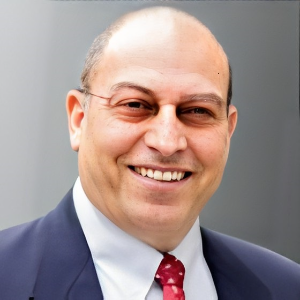Title : Efficacy and safety outcomes in patients with chronic traumatic brain injury: Final analysis of the randomized, double-blind, surgical sham-controlled phase 2 stemtra trial
Abstract:
BACKGROUND: Patients with traumatic brain injury (TBI) frequently experience chronic motor deficits, for which no approved pharmacological or biological agents are available.
OBJECTIVE: To determine whether the stereotactic intracranial implantation of allogeneic modified bone marrow-derived mesenchymal stromal (SB623) cells can reduce chronic motor deficits secondary to TBI.
METHODS: The 1-year, randomized, double-blind, surgical sham-controlled Phase 2 STEMTRA trial (NCT02416492) enrolled 63 moderate to severe TBI patients (GOS-E score: 3-6) with chronic motor deficits (≥12 months post-injury). Patients were randomized to single-dose stereotactic implantation of 2.5x106, 5.0x106, or 10x106 SB623 cells or surgical sham procedure in a 1:1:1:1 ratio. 61 patients who underwent surgery were assessed for safety and efficacy (SB623=46, controls=15).
RESULTS: The primary efficacy endpoint was achieved of statistically significant improvement of the Fugl-Meyer Motor Scale score (FMMS) from baseline of SB623-treated compared with control patients at 6 months (least squares mean [SE] SB623: +8.3 [1.4] vs. control: +2.3 [2.5], P=0.04). However, at 12 months FMMS change from baseline was not statistically significantly different for SB623-treated compared to control patients. Compared to controls, improvement of FMMS in SB623-treated patients was more rapid to 6 months and was sustained to 12 months. Patients in the SB623 5.0x106 cell dose group (n=15) experienced statistically significant improvement of FMMS from baseline compared to control patients at 6 months (SB623 5x106 cell dose: +10.9 [1.8] vs. control: +2.4 [1.8], P=0.002) and 12 months (SB623 5x106 cell dose: +10.5 [1.8] vs. control: +4.1 [1.8], P=0.02). At 12 months, SB623-treated patients experienced statistically significant improvement from baseline of the secondary efficacy endpoints of Action Research Arm Test (SB623: +3.1 [1.2] vs. control: +1.8 [2.1], P=0.59), NeuroQOL Upper Extremity Function T-score (SB623: +3.6 [1.2] vs. control: +1.2 [2.1], P=0.32), NeuroQOL Lower Extremity Function T-score (SB623: +4.6 [0.9] vs. control: +1.0 [1.7], P=0.07), and Gait Velocity (SB623: +0.26 [0.06] vs. control: +0.05 [0.11], P=0.32), but differences between SB623-treated and control patients were not significant. In addition, the secondary endpoint of Disability Rating Scale did not significantly improve from baseline for SB623-treated or control patients at 12 months (SB623: -0.3 [0.2] vs. control: -0.1 [0.4], P=0.61). All SB623-treated and control patients had at least one treatment-emergent adverse event at 12 months, with headache being most frequently reported. Four (8.7%) SB623-treated patients experienced six treatment-emergent serious adverse events (TESAEs) (delirium x2, TIA, seizure x2, worsening of poor balance) compared with three (20%, P=0.35) control patients who experienced three TESAEs (wound infection, bicycle fall, seizure). The majority of TESAEs were not related to cell treatment. No patients withdrew due to adverse events, and there were no deaths or dose-limiting toxicities at 12 months.
CONCLUSION: The stereotactic implantation of SB623 cells appeared to be safe and well tolerated in patients with chronic motor deficits secondary to TBI. The primary efficacy endpoint of statistically significant improvement of FMMS by SB623-treated compared to control patients at 6 months was achieved, with a trend toward improvement of function and activities of daily living compared to baseline at 12 months.
Audience Take Away:
- No pharmacological or biological agents are approved for the treatment of chronic motor deficits secondary to traumatic brain injury.
- Cell-based therapies are a promising approach for the treatment of chronic motor deficits secondary to traumatic brain injury.
- The Phase 2 STEMTRA trial demonstrated that stereotactic implantation of SB623 cells was safe and well tolerated in patients with chronic motor deficits secondary to traumatic brain injury.
- Implantation of SB623 cells resulted in significant improvement of motor impairment at 6 months and a trend toward improvement of function and activities of daily living at 12 months.



